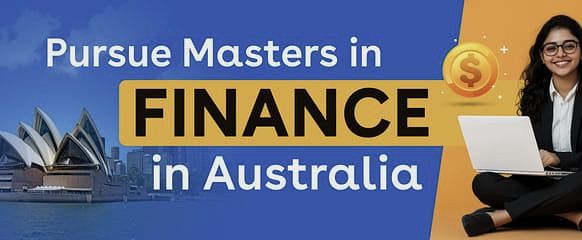The Ultimate 2025 Guide for Masters in Finance in Australia for International Students
Jul 01, 2025

Finance has become a top choice for students aiming to build impactful careers in today's global economy. If you're considering a masters in Australia, you're on the right track. Australia offers a blend of world-class education and practical experience, especially in finance. With its strong ties to the Asia-Pacific markets and a thriving financial sector, studying finance here provides both academic excellence and real-world exposure.
Moreover, Australia's welcoming multicultural environment and post-study work opportunities make it an attractive destination for international students. Whether you're interested in investment banking, corporate finance, or fintech, pursuing a master's in Australia can set you on the path to success. This blog will walk you through each step required to study finance as a master's in Australia. So, let's get started!